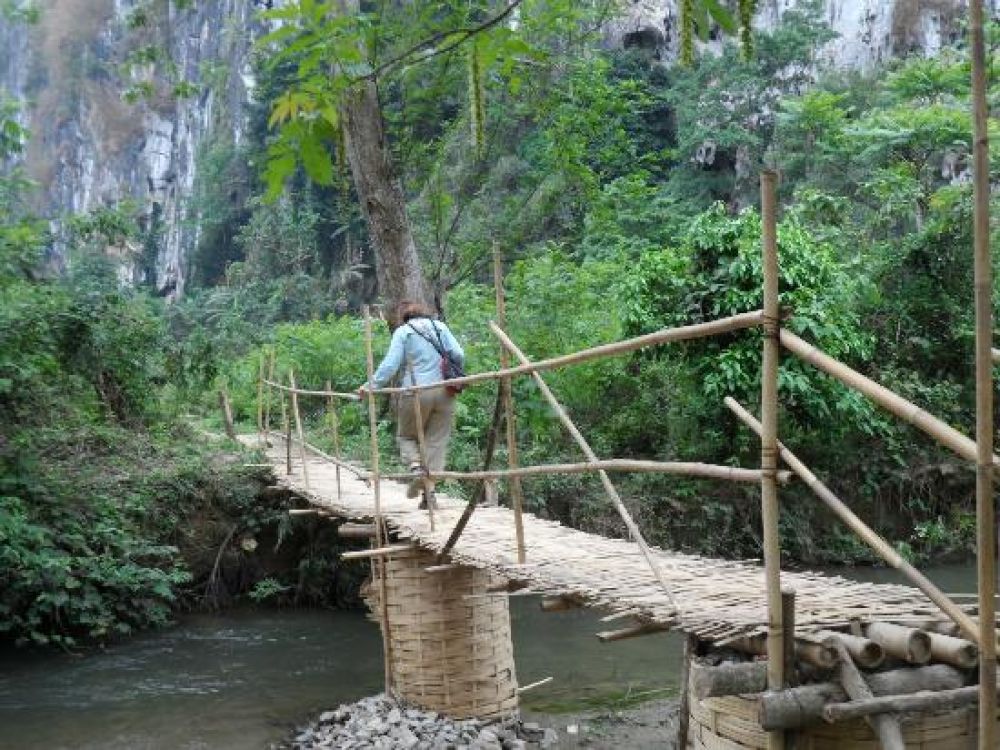

Patok Cave, located in the breathtaking town of Nong Khiaw in northern Laos, boasts a history intertwined with the dramatic landscape of the region. This serene destination, cocooned amidst limestone cliffs and lush greenery, has been part of the local folklore and a silent witness to the passage of time long before it became a beacon for adventurers and history enthusiasts alike.
During the days of conflict, particularly the Vietnam War, Patok Cave and several other caves in the area served as bomb shelters for the local communities. These natural sanctuaries provided a vital refuge from the turmoil of the outside world. The caves, with their vast chambers and complex tunnel systems, were also used for strategic purposes, housing soldiers and storing supplies. This historical chapter has added a layer of profound authenticity to tourism in the region, making a visit to Patok Cave a journey through nature as well as time.
The tourism industry in Nong Khiaw, and specifically at Patok Cave, is relatively nascent. The remoteness of the region and its inaccessibility in the past helped preserve its pristine condition, which is now one of its primary draws. As infrastructure improved, intrepid travelers began trickling into the area in the late 20th and early 21st centuries, captivated by the promise of unspoiled landscapes and the allure of off-the-beaten-track experiences.
In recent years, ecotourism and adventure tourism have surged in popularity, placing destinations like Patok Cave on the map for global travelers seeking sustainable and engaging activities. The following trends are particularly relevant:
Tourists visiting Patok Cave today are greeted by an awe-inspiring sight. Entry into the cave requires a short trek, which also offers panoramic views of the idyllic Nong Khiaw landscape. Inside the cave, evidence of its historical use is still visible, providing a poignant reminder of its role as a sanctuary in troubled times. Guides, often from the local community, are available to share stories and insights into the historical significance of the cave, enhancing the visitor experience.
Recognizing the fragility of the region’s ecosystem, efforts are consistently being made to promote sustainable tourism practices. Educational initiatives aim to raise awareness among both locals and tourists about the importance of preserving natural and historical sites like Patok Cave. Trash management, responsible tour operations, and conservation programs are all integral to ensuring that the beauty of Patok Cave and its surroundings remains unmarred for future generations to treasure.
Today, Patok Cave stands not only as a fascinating natural attraction but also as a symbol of resilience and peace within the captivating landscape of Nong Khiaw. For the thoughtful traveler, it offers a unique blend of adventure, tranquility, and historical reflection, making it an essential destination for those venturing to Laos.